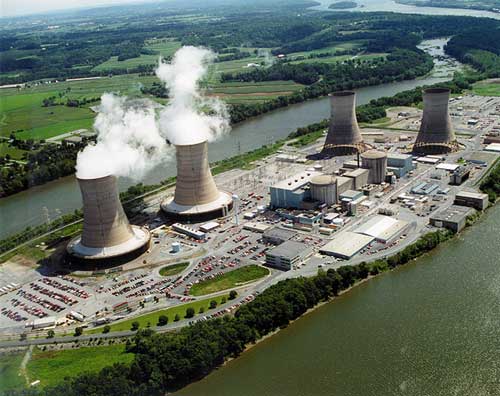It looks like you're using an Ad Blocker.
Please white-list or disable AboveTopSecret.com in your ad-blocking tool.
Thank you.
Some features of ATS will be disabled while you continue to use an ad-blocker.
share:
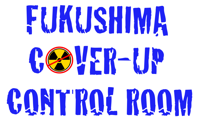
Greetings:
Not that we would ever say, "we told you so," but ...
6 November 2011
Expert on Fukushima radiation in US: [color=3BB9FF]‘We know its going to impact public health’
• It’s more a matter of something happened that we didn’t want to happen.
•
• We know its going to impact public health.
•
[color=Cyan]• There’s not a whole lot you can do about it.
•
• Once you let the horse out of the barn, hell, the horse took the barn door with it.
•
• We’re stuck, this is an accident that should have been prevented. It’s hard to respond to it.
And now, for something completely different:
Japan TV host diagnosed with acute lymphocytic leukemia —
Had been eating Fukushima produce on show
You just can't make this stuff up folks...
And from April, a supercilious post that really attracted our attention to the apparent ignorance and insensitivity that blocks the sheeple's reality of [color=8AFB17]the true horror of the Fukushima multiple melt-through nuclear disaster/fiasco spewing life-altering radiation 24/7/365 [color=8AFB17]with no end or solution in sight.
[color=Salmon]And so what, the Japanese will have a few babies born limbless or with blotchy skin,
they will adapt to their environment.
You're joking, right?
My wife is Japanese, my in-laws are Japanese, and many of the surviving in-laws did time in Tehachapi and we do not appreciate your attempt at levity or derailment.
If you do not think anything is wrong, you eat the yellow snow and drink the milk.
[color=Salmon]Now just to clear the air, i do not like what is going on over there but we cannot help the situation playing keyboard tag with the mongering of fear.
Speak for yourself.
"Playing keyboard tag," as you call it, just might invigorate enough concerned citizens to get up off their lazy butts, turn off American Idol, Dancing With the Stars and Cupcake Wars and
question authority.
We certainly hope so. We are. OPERATION SURVIVAL is a working title for a project in bloom and a natural outgrowth of our Alliance roots. Stay tuned and you heard it here first.
As you can plainly see, dear reader, there is a lot of (re)education to be done to turn the tide in favor of life.
Meanwhile, the goalposts keep getting moved and acceptable collateral damage limits are steadily increased.
25 August 2011
Japan raising radiation limit to 20 millisieverts/year leads to 160,000 lifetime cancers per million people
In April, the Japanese government raised its maximum limit for children from one to 20 millisieverts per year, a level that leads to 2,270 cancers annually per million people (or 160,000 lifetime cancers per million), according to data in a landmark 2006 U.S. National Academy of Sciences report on radiation cancer risk.
A massive outcry later forced the government to reverse the move.
[color=8AFB17]About a fifth of the 1,600 schools in Fukushima prefecture were exposed to at least 20 milliseiverts of radiation this year, according to a Bloomberg story in July. [...]
The children already have a year's worth of radiation in 4 months at the 20 millisieverts per year!

Operation Survival
(How about the following for starters? (this is a work in progress - any input would be sincerely appreciated...)
We are a grassroots peace and environmental organization dedicated to sharing new ideas and vital information necessary for survival in this post 3/11 age.
We support converting our economy to safely fulfill human needs, creating a cleaner, safer and more humane world while working to make the connections between peace, social justice and environmental responsibility.
We think this foto says it all... these are the real OWS'ers (IMHO) and us 30 years ago at Diablo...they should have left sleeping dogs lie... will you join us?

We are not alone:
Australian Cannonball Nuclear News

tfw[align=center][color=magenta]Liberty & Equality or Revolution[/align]

Greetings:
We have been investigating the radioactive nuclear waste musical chairs fiasco which led to the $24 billion fund designated to build the “final resting place” for the nation’s high-level nuclear waste (Yucca Mountain).
Let’s look at the Nuclear Waste Policy Act. We could call this segment:
Nuclear Waste Fund Watch 2012.
By law, the federal government (DOE) is responsible for removing and permanently disposing of spent nuclear fuel generated by civilian facilities, which pay fees for that waste disposal service.
The Nuclear Waste Policy Act authorized an underground repository to permanently dispose of spent nuclear fuel from civilian nuclear reactors.
Under contracts signed with electric utilities pursuant to NWPA, DOE was scheduled to start removing waste from storage sites at individual power plants for transport to a federal storage or disposal facility by 1998.
Currently, the federal government is 14 years behind schedule in its contractual obligations to dispose of this waste and by all indications, by the time any repository might ever be opened, it is likely to face at least a 25-year radioactive waste backlog.
But wait, there is no depository site even being actively considered - and Yucca Mountain is surely not going to be that depository, even after a $10 billion investment in that boondoggle.
In the absence of a federal underground repository to accept nuclear waste for storage, [color=Cyan]taxpayers are now starting to pay—in the form of legal settlements with utilities—[color=Cyan]for a decentralized waste storage system at sites around the country. (Those payments are being made from the Department of the Treasury’s Judgment Fund.)
The Department of Energy (DOE) currently estimates that payments to utilities pursuant to such settlements will total at least $7 billion, and possibly much more if the program’s schedule continues to slip. Regardless of whether or when the government opens the planned repository, those payments are likely to continue for several decades.
Ultimately, Yucca Mountain, the repository that is was authorized under NWPA, [color=Chartreuse]would not provide sufficient capacity to store all of the waste for which the federal government is responsible.
The statutory cap on [color=FDD017]the amount of waste that can be stored there is significantly lower than the volume of waste that DOE expects will be generated during the lifetimes of existing nuclear facilities, let alone the additional volume from any new facilities that may be built. Congressional Budget Office
WTF?
[color=Cyan]'Shelter-in-place' for radioactive nuclear waste?
It looks like us taxpayers (what a surprise) will have to pay utilities to dispose of a substantial amount of additional waste in the future... say at the rate of 2-3 thousand tons per year.
But what is the end-game?
These charts are from 1996, indicating that our USGOV knew that this was a no-win situation way back then.
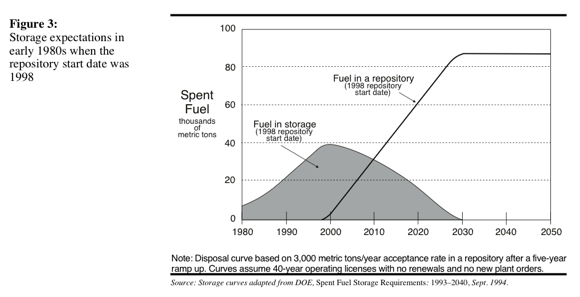
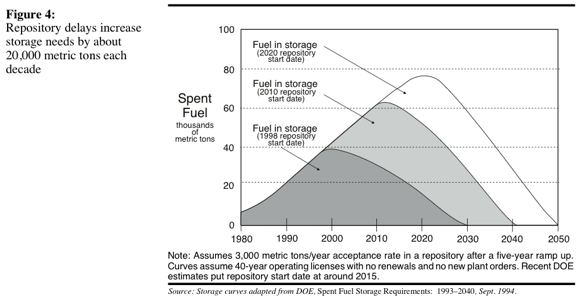
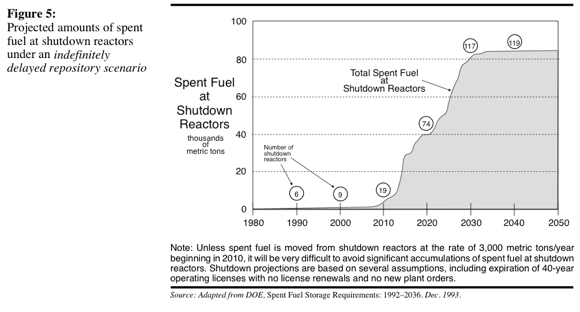
When a reactor shuts down, its owners theoretically have three options: prompt and complete dismantlement; delayed dismantlement (sometimes called SAFSTOR); and entombment, probably in concrete.
In reality, however, [color=Cyan]dismantlement of the entire facility is not really possible because there is no place to ship spent nuclear fuel.
Are these people merely delusional or just plain stupid and therefore even more dangerous?
When a reactor shuts down, managers have two options. They can keep the pools operating, or, if they anticipate at-reactor storage for more than a few years, they can more economically move all of the spent fuel into dry storage.
Indications are that there may be some cost advantages associated with long-term centralized storage once reactors begin shutting down in large numbers, in large part, because of the high cost of operating pools. However, as long as reactors are operating, the costs of centralized and at-reactor storage appear to be comparable.
What part of “there is no centralized storage” is too difficult to understand?
At the moment, there are only three federal nuclear facilities currently storing defense/research spent fuel and high-level radioactive wastes - Savannah River, Hanford and INEL.
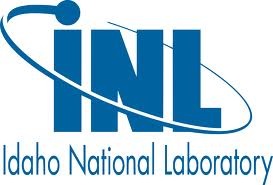
To be continued...
edit on 25/12/2011 by thorfourwinds because: color

(Continued from previous post)
Let’s go with Door #3 for this discussion, since we have previously discussed Savannah River and Hanford.
A 1995 agreement between the DOE and the state of Idaho prohibits the DOE from shipping spent fuel from commercial reactors to INEL. (PSC of Colo. v. Batt 1995).
Actually, that is not quite the real story. Consider this:
In October of 1995, the state of Idaho, US Navy, and US Department of Energy (DOE) reached agreement (most often called the Settlement Agreement) settling a lawsuit filed by the state to prevent shipment of spent nuclear fuel to the INL for storage. Highlights of the agreement include the following:
• The state of Idaho will allow a total of 1,135 shipments of spent fuel to come to the INL
for interim storage over a 40-year period. Of those shipments, 575 will come from the Navy.
• The rest will come from other DOE sites, foreign research reactors (if DOE chooses to accept that fuel), university reactors and a specified amount from private companies directly supporting DOE research and development activities.
Now it gets really good.
• DOE will remove all spent nuclear fuel from Idaho no later than 2035.
And pigs will fly.

• DOE will treat all high-level waste at the INL, in preparation for final disposal elsewhere,
by a target date of 2035.
Treat? This should be interesting. DOE can’t even keep track of $24 billion or so.
• If DOE fails to remove all spent fuel by 2035, the state may levy a fine of $60,000 per day.
Good luck on collecting. BTW, how would a state strong-arm the feds?
If DOE fails to meet any of the agreement milestones at any point, the state may ask the federal court to halt any further spent fuel shipments to the INL.
This stuff just can’t be made up. Come on, folks. Just how many other gems like this are buried in the mountains of paper trails generated to hide this nefarious shell game?
Why is the Settlement Agreement good for Idaho?
Gets nuclear waste out of Idaho. Idaho is now the only state in the nation that has a court
order mandating that federal nuclear waste leave state boundaries by a specific date. No other state in the nation has such a legally binding commitment
Forces the federal government to dry up ALL the highly radioactive liquid wastes, which greatly reduces the risks to the aquifer
Prevents Idaho from becoming the dumping ground for the nation's commercial spent
nuclear fuel
Protects the economy of eastern Idaho
Poor, poor disillusioned Idaho governor. We are willing to bet that this will not come about as promised. How much are we talking about, anyway?
DEQ's INL Oversight Division estimates that approximately 10,851 shipments of nuclear material will leave Idaho. The first shipments began leaving Idaho in early 1999. The last shipments should leave Idaho by 2035.
Approximately 3,051 shipments of spent fuel will leave Idaho.
Approximately 7,800 shipments of transuranic material will leave Idaho for the Waste Isolation Pilot Plant in New Mexico.
An agreement between the state of Idaho and DOE was finalized in 2008 setting forth the compliance requirements for this section of the Settlement Agreement.
Huh? Where are the “Approximately 3,051 shipments of spent fuel ...” going?
BTW, wasn’t the reactor core debris and fuel from TMI shipped there in the late ‘90’s?
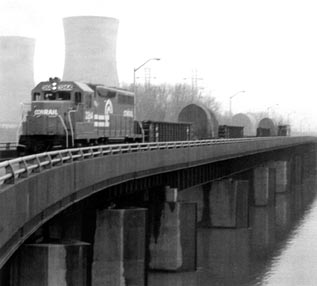
Here are actual photos of the event.
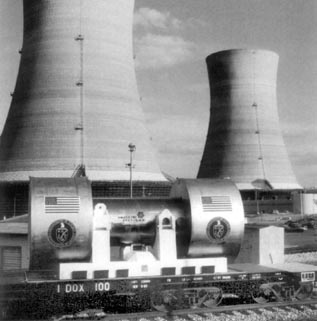
The federal government took responsibility for the waste after it left TMI's plants. [color=Chartreuse]The refuse will remain radioactive for more than 10,000 years...The Idaho lab houses about 99 percent of the uranium fuel from Three Mile Island.
The Energy Department and the state of Idaho plan to spend $30 million to move the 344 containers of TMI waste into steel-and-concrete dry storage casks, deemed an improvement from the 1950s-era cooling water pools that lack protective steel linings or a leak-detection system.
The rest of the fuel and other parts of the damaged generating station remain at the plant site near Harrisburg, Pa. The station will be dismantled after 2014, when the license for a sister plant expires.
source
Nuclear waste, secrecy and slippery slope
In January 2011, the state of Idaho signed a secretly negotiated deal allowing shipments of highly radioactive commercial nuclear waste to the Idaho National Laboratory.
To be continued...

(Continued from previous post)
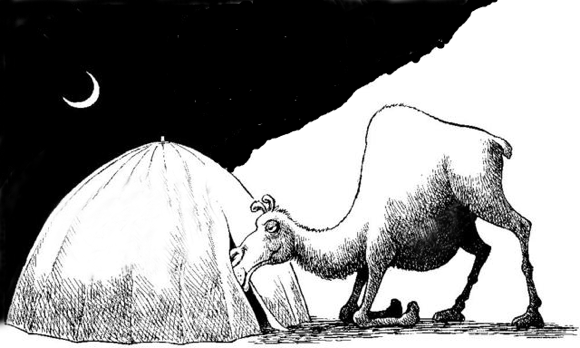
Aha! The proverbial nose of the camel under the side of the tent. Guess what?
Nuclear waste, secrecy and slippery slope
In January 2011, the state of Idaho signed a secretly negotiated deal allowing shipments of highly radioactive commercial nuclear waste to the Idaho National Laboratory.
The “state” didn’t sign anything, as it has no hands.
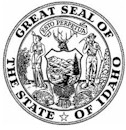
The Governor, C.L. "Butch" Otter, signed the “secret” agreement.
It violates the spirit and intent of the 1995 agreement between Idaho and the US Department of Energy forbidding such shipments...
[color=Cyan]The state will be told, with a time lag of a year, the source and amount of spent fuel shipped here, any research project’s purpose and schedule and how much waste it will produce, and the waste’s “potential” disposition path.
Our good ol’ USGOV at work. Any time public policy is developed and carried out in secret, it undermines the transparency and accountability that are the bedrock of good government. However, there doesn’t appear to be either when speaking about nuclear waste.
And the game becomes more interesting the deeper the hole... this gem from March 1996:
Disposal and Storage of Spent Nuclear Fuel - Finding the Right Balance
A Report to Congress and the Secretary of Energy Nuclear Waste
Technical Review Board
Although geologic disposal of spent fuel and high-level waste enjoys broad support from the scientific community in this country and abroad, a site has not yet been judged suitable for a repository nor has a repository design received final regulatory approval in any nation developing a radioactive waste management program...
Finally, the Board believes that future uncertainties and the likelihood that many reactors will be shutting down beginning in 2010 argue for having a fully operational centralized storage facility available — and [color=FDD017]capable of accepting around 3,000 metric tons of spent fuel per year — by at least 2010, ideally at a repository site...
How about in here?

A visitor stands next to a 3D mural called, 'Insesatez', in Lleida, Spain
And this bit of information projecting 60,000 tons of spent fuel by 2010:
2 February 1997
Three Mile Island's radioactive debris remains a headache
Crews have completed the cleanup from the 1979 partial meltdown at the Pennsylvania reactor and transported the radioactive materials to a temporary underwater storage a continent away, in the Idaho desert. It will stay there until safer quarters can be built, at least 2010...
The situation reflects a larger problem facing the government and the nuclear industry - where to bury 30,000 tons of spent fuel from more than 100 commercial nuclear reactors from Maine to California. The amount is expected to double by 2010 and continue climbing as older reactors are shut down.
We notice that the estimates of the spent fuel totals are different by as much as 10,000 tons - 14 years ago and the information is all from government sources.
Back to the money trail.
Someone, some person - a living, breathing individual with a title and name - working for we, the people, has the charge of keeping track of this $24+ billion. Let us remember this as we wind our way down the rabbit hole...this is good stuff.
Title 42 of the US Code as currently published by the US Government reflects the laws passed by Congress as of Jan. 7, 2011, and it is this version that is published here.
We recommend a careful read of this document.
United States Code: Title 42,10222. Nuclear Waste Fund | LII /
Legal Information Institute
TITLE 42 > CHAPTER 108 > SUBCHAPTER III > § 10222
§ 10222. NUCLEAR WASTE FUND
(a) Contracts
(1) In the performance of his functions under this chapter, the Secretary is authorized to enter into contracts with any person who generates or holds title to high-level radioactive waste, or spent nuclear fuel, of domestic origin for the acceptance of title, subsequent transportation, and disposal of such waste or spent fuel. Such contracts shall provide for payment to the Secretary of fees pursuant to paragraphs (2) and (3) sufficient to offset expenditures described in subsection (d) of this section.
To be continued...
edit on 25/12/2011 by thorfourwinds because: color
edit on 25/12/2011 by thorfourwinds because: space

(Continued from previous post)
(2) For electricity generated by a civilian nuclear power reactor and sold on or after the date
90 days after January 7, 1983, the fee under paragraph (1) shall be equal to 1.0 mil per
kilowatt-hour.
(3) (...) Such fee shall be paid to the Treasury of the United States and [color=Cyan]shall be deposited in the separate fund established by subsection (c) of this section. In paying such a fee, [color=FDD017]the person delivering spent fuel, or solidified high-level radioactive wastes derived therefrom, to the Federal Government [color=FDD017]shall have no further financial obligation to the Federal Government for the long-term storage and permanent disposal of such spent fuel, or the solidified high-level radioactive waste derived therefrom...
(5) Contracts entered into under this section shall provide that—
(A) following commencement of operation of a repository, [color=Chartreuse]the Secretary shall take title to the high-level radioactive waste or spent nuclear fuel involved as expeditiously as practicable upon the request of the generator or owner of such waste or spent fuel; and
(B) in return for the payment of fees established by this section, the Secretary, [color=Chartreuse]beginning not later than January 31, 1998, will dispose of the high-level radioactive waste or spent nuclear fuel involved as provided in this subchapter.
Providence, chain-of-evidence, whatever you call it - the buck stops with the Secretary.
This item is of particular interest:
(4) No high-level radioactive waste or spent nuclear fuel generated or owned by any department of the United States referred to in section 101 or 102 of title 5 may be disposed of by the Secretary in any repository constructed under this chapter unless such department transfers to the Secretary, for deposit in the Nuclear Waste Fund, amounts equivalent to the fees that would be paid to the Secretary under the contracts referred to in this section if such waste or spent fuel were generated by any other person.
Just exactly what departments of the USGOV are generating high-level radioactive waste or spent nuclear fuel that are involved in this nuclear waste Ponzi scheme?
University research reactors? Wouldn't be the first time places of higher learning would be used in a covert op.
Military reactors? US Navy? What do we have now, about a hundred or so nuclear-powered submarines and 11 aircraft carriers and 9 cruisers? Obviously, that spent fuel has to go somewhere.
This does not pass the smell test and seems to be a part of a circle-jerk Ponzi operation designed to obfuscate the fact that there is no money anywhere to be found as of this writing on Christmas Eve, 2011.
OFF TOPIC
Merry Christmas everyone!

Happy Holidays to all on ATS and the best staff in the business! Thank you for making this “consciousness expanding tool” what it is.

ON TOPIC
Dare you try to prove us wrong, all you “regular” ATS debunkers?
Phage, care to take a swing at this?
We’re sure everyone would be interested in your unique answer to the long-term nuclear waste depository problem.
Also, can even you verify that the $24+ billion has not somehow mysteriously evaporated?
(e) Administration of Waste Fund
(1) [color=FDD017]The Secretary of the Treasury shall hold the Waste Fund and, after consultation with the Secretary, annually report to the Congress on the financial condition and operations of the Waste Fund during the preceding fiscal year.
Based on the foregoing, the Secretary is ultimately responsible for the $24+ billion.
Let’s cut to the chase and ask to see the money - plain and simple.
Oops... the Secretary of the Treasury is “Fast Timmy Furious” Guitner.
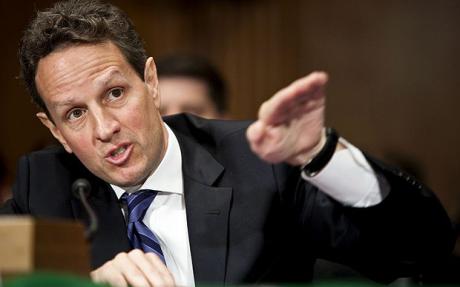
What was it we said about the fox and the henhouse?
Digging a bit deeper in the DOE mud:
5 April 2010
US nuclear utilities sue to stop waste fund fees
The demands:
• Want DOE to stop collecting $750 mln in annual fees
• Fees paid by consumers on monthly electric bills
• DOE should suspend fees until find Yucca alternative
• DOE says fees are legally mandated
The U.S. Nuclear Energy Institute and 16 utilities filed a lawsuit on Monday to try to get the Energy Department to stop collecting fees from utilities for a waste program [color=Cyan]now that a planned disposal site has been scrapped.
To be continued...

(Continued from previous post)
They want the court to tell the DOE to suspend collection of the fee, which it said amounts to about $750 million per year, because [color=FDD017]the Obama administration has announced it will not pursue plans to store waste at Yucca Mountain in Nevada. [ID:nN16251516]
The group says the fee, which is paid by consumers with a surcharge of one-tenth of a cent per kilowatt-hour on monthly electric bills, should be suspended until the government determines its new plan for waste.
The department's nuclear waste fund has a balance of more than $24 billion, the group said. The group first asked the DOE to stop collecting the fee last July. [ID:nN09459025]
It seems that they infer money is there as of 5 April 2010. And then this turn of events.
(...) At least one company, Exelon Corp (EXC.N), has said it will not pursue new U.S. nuclear plants at this time, citing the lack of a national plan for waste in its decision. [ID:nN25221371]
One might wonder why the sudden change of heart. After all, these guys are fairly big guns in the nuclear power business.
On the trail of the money; a name for the account where the $24+ billion resides: Treasury’s [color=Cyan]Nuclear Waste Fund.
27 July 2010
The Federal Government's Responsibilities and Liabilities Under the Nuclear Waste Policy Act
(...) Starting in 1983, the NWPA authorized DOE to charge electric utilities fees to cover the costs of disposing of the nuclear waste they generate. Utilities today pay annual fees at a rate of 1 mil (0.1 cent) per kilowatt-hour of the electricity they sell that is generated by nuclear power plants...
The fees, which are recorded in the budget as offsetting receipts (a credit against direct spending), are deposited into the Treasury’s Nuclear Waste Fund.

Aha! We have an account at the US Treasury...should be safe there, n’est-ce pas?
(...) Table1 summarizes the government’s receipts and disbursements related to the nuclear waste disposal program from 1983 through the end of fiscal year 2009. During that time, $31.0 billion was credited to the Nuclear Waste Fund. That amount includes fees paid by the nuclear industry totaling $17.1 billion as well as $13.8 billion from intragovernmental transfers of interest credited to the fund.
Cumulative expenditures from the fund during that period totaled about $7.3 billion, mostly for analyses related to the waste disposal program and for initial design work by DOE on the Yucca Mountain facility. The NRC and other federal entities also received modest appropriations from the fund for work related to the program, leaving an unspent balance of $23.6 billion at the end of fiscal year 2009.
CBO estimates that in 2010, another $2.0 billion will be credited to the fund—nearly $800 million from fees and the rest from interest. Expenditures in 2010 will total $0.2 billion, bringing the fund’s end-of-year balance to $25.4 billion, CBO estimates...
The inference is that the money existed on this date, 27 July 2010, according to the CBO.
Is that like the fox guarding the henhouse?
Are there any hens actually still inside?
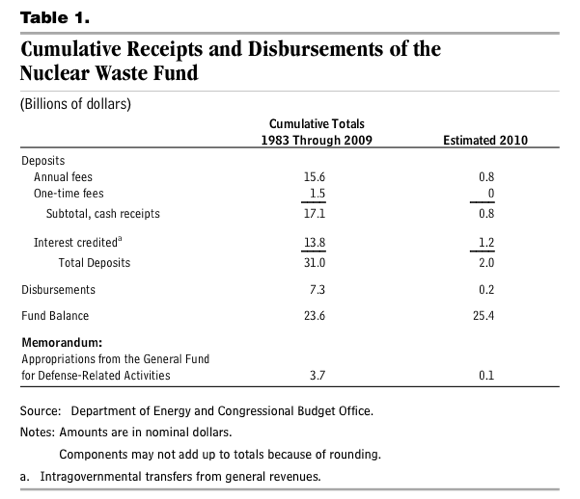
If, in fact, this document is shown to be false, are there any remedies to this situation?
Who should hang for this deception and outright theft?
Does anyone really care, or merely is this another piece of bravo sierra to be shoved in a corner, hopefully out of sight?
NukeSpeak...well, at least it's only six months old and states that the $24+ billion is there.
May 2011
Budget and Financial Management Improvements to the Nuclear Waste Fund (NWF)
3. Administratively reclassifying the NWF annual fees as budget offsetting collections, so
that funds appropriated are the used/spent nuclear fuel management can be scored on a
net zero basis for purposes of compliance with Congressional spending caps.
We smell ‘eau de rat!
A closer look...

Background Report to the Blue Ribbon Commission
on America’s Nuclear Future
The NWF currently holds a surplus balance of over $24 billion, increasing at a rate of about $2 billion per year.
Annual fees provide about $0.8 billion per year; interest on the fund balance is credited at a rate of over $1 billion annually...
To be continued...
edit on 25/12/2011 by thorfourwinds because: (no reason given)

(Continued from previous post)
The NWF currently holds a surplus balance of over $24 billion, increasing at a rate of
about $2 billion per year. Annual fees provide about $0.8 billion per year; interest on
the fund balance is credited at a rate of over $1 billion annually...
Can't we just follow the paper trail?
The three issues for possible administrative action include:
1. Instituting financial management enhancements to foster multi-year budgeting and
appropriations; combined accrual and cash budgeting; and separate capital budgeting;
2. Applying the dual accrual/cash accounting and budgeting process for collecting the
annual 1 mil (0.1 cents) per kWh annual fee, with the timing of cash collections linked
to appropriations and outlays; and
[color=Chartreuse]3. Administratively reclassifying the NWF annual fees as budget offsetting collections, so
that funds appropriated are the used/spent nuclear fuel management can be scored on a
net zero basis for purposes of compliance with Congressional spending caps.
To sum up this possible exercise in futility, we are led to believe that as of May 2011, the money was there. Of course, there are “improvements” in the works.
3.1 ISSUE #1: BUSINESS-LIKE BUDGETING AND FINANCIAL MANAGEMENT
IMPROVEMENTS
Management of the used/spent fuel from commercial reactors is a business-like activity. Because of the very long time frames in permanent disposal of used/spent fuel, Congress decided in 1982 that the federal government would take management responsibility for used/spent fuel, but require the generators of the used/spent fuel to pay the full cost for this service.
Thus, management of used/spent fuel should be viewed as a business-like rather than inherently government function, such as national defense or highway maintenance...
Head spinning yet? Watch the sleight-of-hand here.
Does the $24+ billion simply evaporate in an accounting “reclassification?”
Enquiring minds want to see the money.

Peace Love Light
tfw
[align=center][color=magenta]Liberty & Equality or Revolution[/align]

RADIATION WATCH 2011
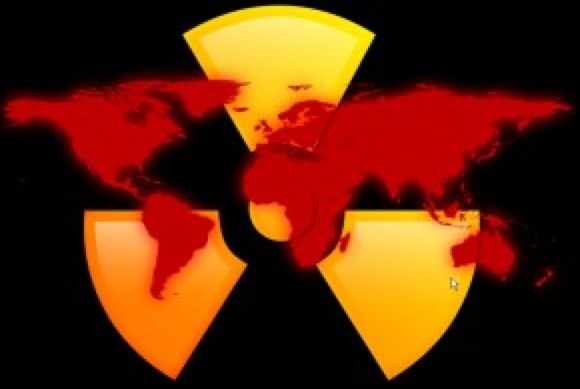
[color=Cyan]The total number of days between Friday, March 11, 2011 and Friday, December 23, 2011 is 287 days.
[color=Chartreuse]The radiation poisoning of we, the people, our children, pets, food, water and our land
has continued unabated - 24/7/365
- for 9 months, 12 days ... which is:
• 24,796,800 seconds
• 413,280 minutes
• 6,888 hours
• 41 weeks
One again, are we any closer to a solution to the Fukushima multiple melt-throughs disaster/fiasco spewing life-altering clouds of radiation 24/7/365
And now for something completely different:
19 December 2011
Hosono Says Fukushima Plant Is in ‘Equivalent of Cold Shutdown'
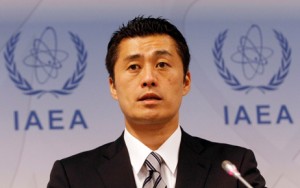
Tokyo Electric Power Co.'s crippled reactors in Fukushima are in a state “equivalent to cold shutdown” even though the definition would be different in the case of an undamaged plant, Goshi Hosono, the minister in charge of responding to the disaster, said today.
‘[color=Cyan]We understand that there is a difference between the cold shutdown state for a normal nuclear reactor and the state of cold shutdown that we have achieved at Fukushima Dai-Ichi,’ Hosono told reporters in Tokyo.
'The goal is to have nuclear fuel where it is kept in a cold state and to ensure that radioactive materials are not emitted. That is the whole point of the cooling system that we have in place.'
Speechless.
Cold shutdown doesn't apply to melted reactors.
In-your-face NUKESPEAK!
There is no way to peaceably win this war when the opponents keep moving the goalposts and changing the rules of the game in mid-play.
Feeling somewhat frustrated and helpless, we wonder what do we do now?
How to channel all this pent-up frustration and intense energy?
Perhaps we go to the “end,” the radioactive waste?
Beginning premise:
Creating additional radioactive waste on a daily basis with no solution in sight is foolhardy at best.
Such myopia should be called what it REALLY is: Criminal Negligence.
In 1987 Congress designated Yucca Mountain as the future repository for all nuclear waste in this country. Yucca Mountain is inside a government nuclear test site in the Nevada desert.
So far, over $9 billion has been spent constructing an intricate maze of underground tunnels and chambers designed to house nuclear waste safely for at least a million years.
Yucca Mountain has been designed as a specialized storage center to keep nuclear waste safely contained in an underground facility deep inside a mountain, long after the material is believed safe and no longer radioactive.
The storage center is on a military base almost one hundred miles from civilization (and that's Las Vegas, for what it's worth), in the middle of the Nevada desert.
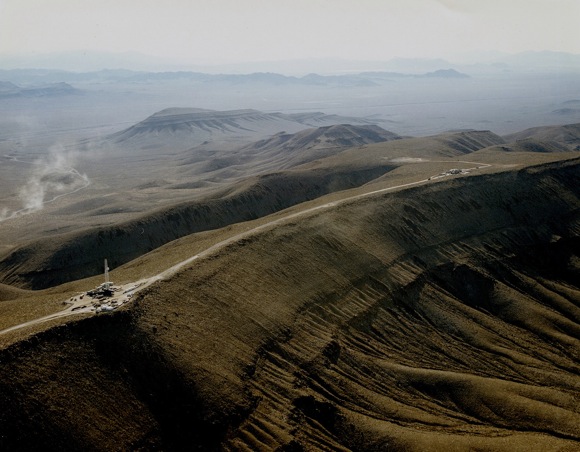
Due in part to its complexity, the site wasn’t expected to receive any nuclear waste until 2020. Currently, all such waste is being stored in temporary facilities.
One more thing…Yucca Mountain is the only long term nuclear waste site this country has.
How temporary is temporary?
But Yucca Mountain is not going to be the long term nuclear waste site!
[color=Chartreuse]FULL STOP!
The radioactive waste musical chairs game has ended - the music has stopped - and the waste is where it is for the foreseeable future.
What part of this fiasco is difficult to understand?
One might wonder where all that nuclear waste is today, and is it stable enough to reside where it is for perhaps decades - or eternity?
Closing Yucca Mountain will leave 130,000 metric tons of nuclear waste stranded at 131 different sites spread across 39 states. The federal government will be at risk of breach-of-contract lawsuits for breaking agreements with utility companies.
Some estimates indicate the potential for the Obama DOE could incur more than 50 billion dollars of legal liability in the case.
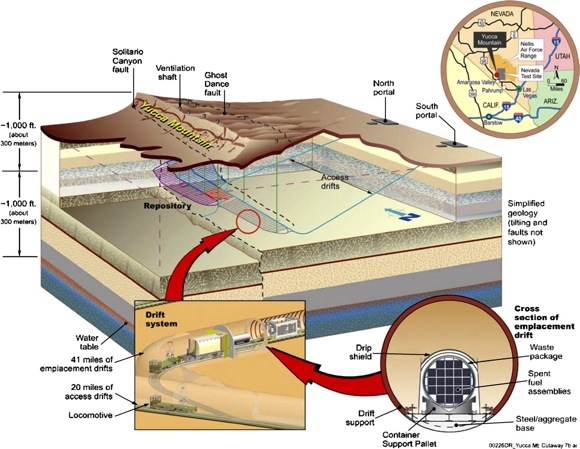
"You can do all the recycling in the world, but you are still going to be left with a residue that has to be stored somewhere, preferably underground. You’ve got this residue. Where are you going to put it?"
Mitch Singer, a spokesperson for the nuclear energy industry.
To be continued ...
edit on 27/12/2011 by thorfourwinds because: color

(continued from previous post)
According to an article on CNN.com, "Currently, 70,000 tons of radioactive waste are stored at more than 100 nuclear sites around the country, and 2,000 tons are added every year."
How is all this stuff being stored today?
Expended nuclear waste is typically kept in special canisters stored above ground and constructed of concrete, steel, and lead at the reactor's plants, which generate them as a temporary solution.
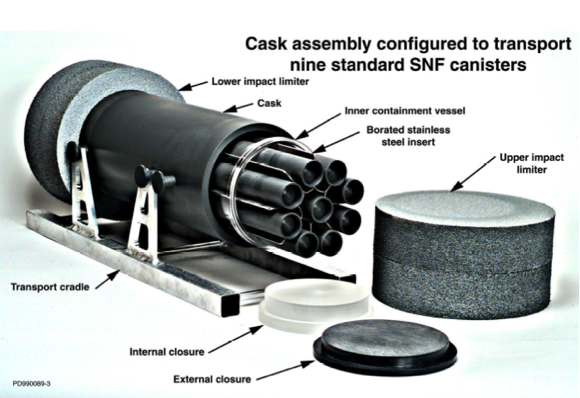
[color=3BB9FF]The Nuclear Regulatory Commission has certified the expected lifespan of these containers to be ninety years, though how that number was determined is unclear.
Nuclear energy didn't exist ninety years ago, and therefore nuclear waste hasn't been kept in one of these containers for ninety years to test the theory.
Question:
Why would Obama close the only viable answer to long-term storage of nuclear waste while he simultaneously calls for additional nuclear power plants?
Nuclear waste piling up faster than solutions can be dreamed
In 1987, Washington unilaterally decided the waste was going to Yucca without seriously considering other potential sites. Not surprisingly, Nevada citizens have railed against the top-down plan ever since.
If the government doesn’t bow to pressure and reverse its decision, US nuclear waste planners will be going back to the drawing board for what promises to be another very prolonged and expensive exercise.
So, what’s the real deal?
The root reason the waste problem isn't solved is technical. Since radioactive emissions are strong enough to destroy ANY container, the "technical" problem will NEVER be solved.
New alloys, new crystal structures, microbes that eat radioactive waste, vitrification -- all worthless. Rocketing the waste into space, subduction zones in the sea, deep holes -- won't work either.
And, it seems that nobody wants the stuff in their back yard.
On December 20, 2011, The First Nations of the North Shore Tribal Council strongly rejected the prospect of the North Shore of Lake Huron becoming a site for the long-term storage of nuclear waste for the Nuclear Waste Management Organization (NWMO).
Elliot Lake has a long history of uranium mining that resulted in the boom and bust of the city, as well as significant and lasting environmental damage to the local watershed and nearby ceremonial grounds.
“We cannot idly stand by and watch as they inject Mother Earth with this cancer,” says Chief Lyle Sayers, chairman of the North Shore Tribal Council. “We must ensure that the future natural resources of this area are there for our children, generations to come, and businesses alike.”
The half-life of this material is hundreds of thousands of years old and could impact generation after generation.
No site can ever be totally safe for nuclear waste storage.
Let’s follow the money.
In 1982, the Congress passed the Nuclear Waste Policy Act, which required the Department of Energy to safely and permanently dispose of spent nuclear fuel no later than January 1998.
The Act also created the Nuclear Waste Trust Fund, which required ratepayers, through their electricity bills, to pay for the safe transportation and disposal of spent nuclear fuel.
Almost 30 years ago, Uncle Sam entered into a contract with utilities to dispose of their nuclear waste beginning in 1998. That disposal was supposed to happen at Yucca Mountain. Under the law, all nuclear facilities were required to pay an annual fee to the nuclear waste trust fund to cover the cost of Yucca Mountain.
When the federal government missed the 1998 deadline, utilities sued the government to recover their costs incurred in storing the waste. So far, according to federal officials, it will cost the government some $16.2 billion to pay the legal judgments entered against the government…[color=FDD017]assuming there will be a completed federal disposal site by 2020.
There is a small problem, though…the $25 billion fund does not exist.
To be continued ...
edit on 27/12/2011 by thorfourwinds because: color tag?

(continued from previous post)

There is a small problem, though…the $25 billion fund does not exist.
All of the fees collected in excess of the costs of building the Yucca Mountain facility,
instead of being placed in a trust fund, were simply spent by the government as quickly as
they were received.
As a result, a group of state regulators and the Nuclear Energy Institute, a trade organization, are suing the Department of Energy, seeking to suspend collection of the annual fees utilities pay into the waste fund. "There’s no sense paying a fee if you are not getting a program for it," said NEI’s Steven Kraft...
One might extrapolate that idea and think,"There's no sense paying a fee if you are not getting what was promised from it..."
One might ask if we ever get our money back - or a credit on our power bill - when these nukes are not built.
Check this out:
Does your power bill have this "Nuclear Construction Cost Recovery" fee and is it the same 5.8619% of base bill calculations?
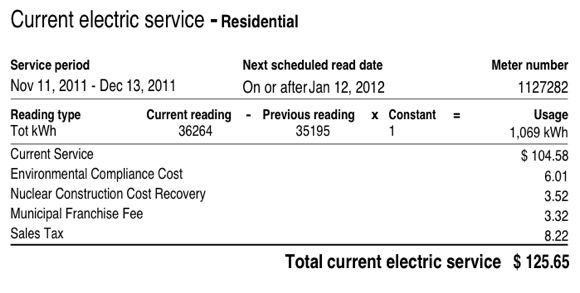
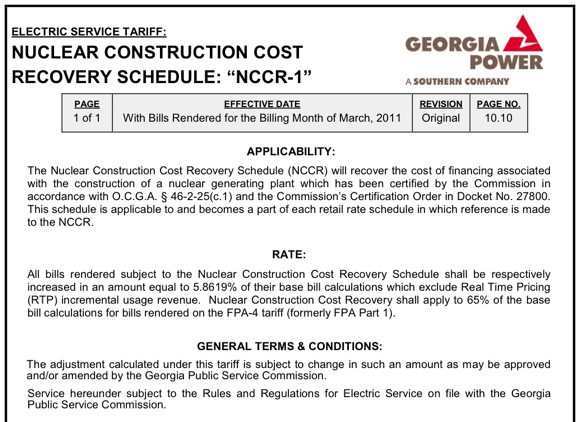
The nuke folks have a sweet deal: the customers pay the construction costs up-front and the USGOV/DOE (theoretically) is responsible for long term storage of this hideous radioactive waste.
April Fool's - the utilities are now stuck with what they already have on site and what they generate on a daily basis.
Do you have one of these de facto long term storage facilities in your back yard?
Locations of Spent Nuclear Fuel and High-Level Radioactive Waste Destined for Geologic Disposal
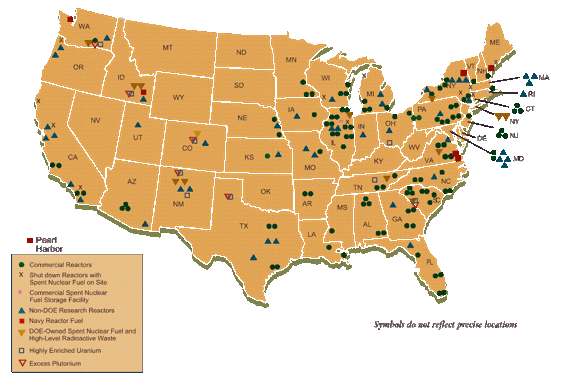
And this:
U.S. Nuclear Manufacturing and/or Waste Sites
These are sites where nuclear materials have been manufactured and/or where waste has been stored, and where massive leaks, toxic emissions, or unexplained losses have occurred in the processing of nuclear and other toxic materials. Listed with the site is the type of toxic or radioactive leak or "loss."
Oak Ridge, TN - mercury, other heavy metals, nuclear (uranium, waste), dioxin
Barnwell, SC - nuclear (waste)
Hanford, Richland, WA - nuclear (plutonium, waste)
Rocky Flats, Colorado - nuclear (plutonium)
Idaho Falls, ID - nuclear (plutonium)
Pantex, TX - nuclear (tritium)
Maxey Flats, KY - nuclear (waste)
West Valley, NY - nuclear (waste)
Nuclear Metals, Concord, MA - nuclear (uranium)
Kerr-McGee, Cimarron, OK - nuclear (plutonium)
The Oak Ridge and Hanford facilities stand out among them as being among the largest leaks of toxic and/or radioactive waste in the world. At Oak Ridge, literally millions of pounds of mercury have leaked into the ground, the aquifer, and a streambed that then winds many miles through the Tennesee countryside and through several towns...
To be continued ...

(continued from previous post)
Meanwhile, back at the ranch:
Every day, there is more waste, more radioactive pollution, such as tritium, which is killing our citizens, and more of the "ignoble seven" whose daughter products include noble gases, which are freely released by nuclear power plants in copious quantities.
The "ignoble seven" are: Technetium-99, Tin-126, Selenium-79, Zirconium-93, Cesium-135, Palladium-107, and Iodine-129.
All have half-lives > 200,000 years.
Someone seems to have missed the elephant in the room.
All nuclear power plants need to be closed NOW.
They are old, corroded, embrittled, dilapidated and their employees have repeatedly abdicated their responsibilities - from proper training, to doing their fire rounds, to numerous problems with top management, to not giving a damn about possible irreversible catastrophe only ONE accident away, and so on.
Every day the plants run, they increase the total risk, the total cost, the immediate risk, and the immediate cost -- costs in terms of health effects around the plants, and delayed costs from accidents or just from fuel storage.
Even if we stop making nuclear waste, every movement of the fuel entails enormous risk. And there will be tens of thousands of shipments from all around the country.
source
source
But what, when, how and where?
Scientists don't know.
Each trip is a terrorist's best friend and a sane person's worst nightmare.
When the music stopped, radioactive waste appears to be where it will stay for the foreseeable future.
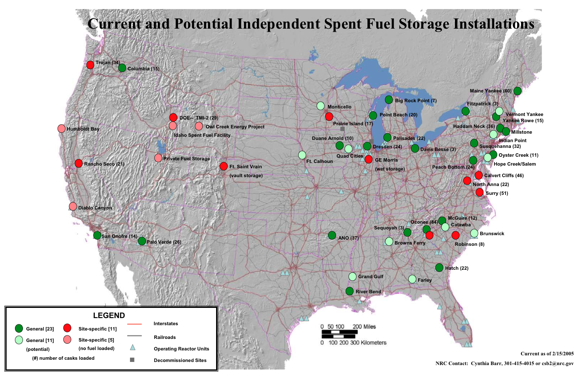
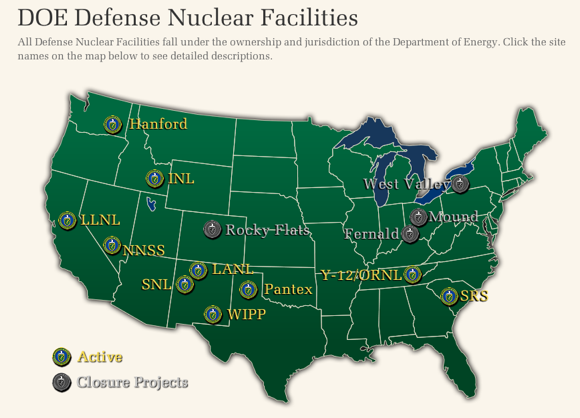
Let us go back in history a couple of years in an attempt to understand this nuclear waste shell game.
19 May 2009
Billions in tax dollars found buried in Nevada Cave
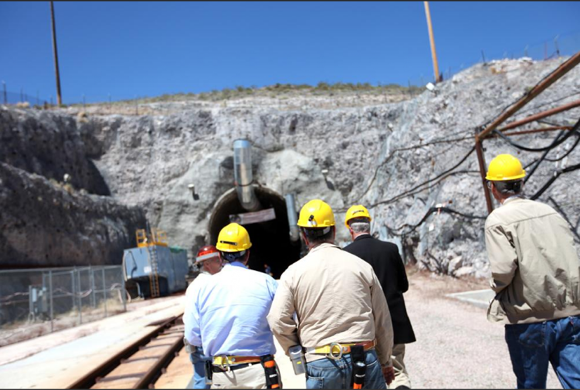
If you think anyone in Washington gives a damn about your money, listen to how they have wasted it, and will continue to waste it, because of "politics."
Taxpayers have spent more than $10 billion dollars digging a hole in a mountain in Nevada where the nation's nuclear waste was supposed to go.
The Yucca Mountain project has been underway for nearly three decades.
In 1987, Congress even passed a law explicitly directing waste from the nation's nuclear power plants would start arriving in Yucca Mountain in by the late 1990's.
So far, not one single radioactive isotope has made its way to Yucca, and probably never will.
President Obama, making good on a promise to Senate Majority Leader (and not-in-my-backyard-of-Nevada) Harry Reid, has effectively killed any future for the Yucca Mountain facility. More than $10 billion dollars of scientific study, engineering and congressional spending has just been thrown into a hole in the ground.
But Yucca Mountain is not officially dead, and here is where the real arrogance of wasting your money comes in.
Even the President cannot kill the project because, remember, the project is law.
According to the federal government, the government is required to build Yucca Mountain and accept the waste.
Senator Harry Reid (D-NV) would like to change that law, but without an option for where all this waste will go, it may be hard to get the votes.
So what to do?
Keep Yucca Mountain on life-support while you spend money looking for another alternative. President Obama plans to do just that by spending $197 million dollars in the 2010 budget, essentially to pay people to do nothing.
Out at Yucca Mountain, there will be a staff getting paid, proceeding with licensing and other odds and ends, [color=Cyan]knowing all along that the project has no future.
It's pure politics that has already cost you and me $10 billion dollars and now $197 million more.
Let's hope they don't carve out more of Yucca Mountain to stuff with dollar bills.
To be continued ...

(continued from previous post)
... 41 weeks ago ...
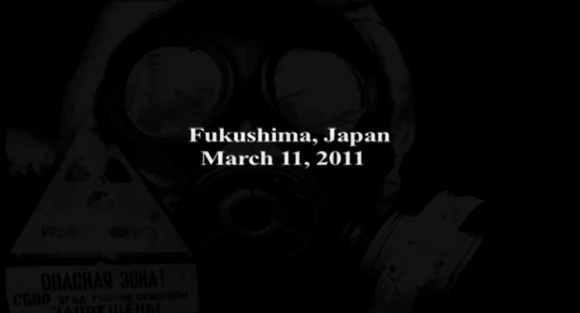
And this from only a week before the world changed.
3 March 2011
As U.S. Moves Ahead with Nuclear Power, No Solution for Radioactive Waste
President Obama has won wide bipartisan support for his determination to revive American nuclear power — a low-carbon energy solution that electric utilities and conservatives can support.
But a pair of legal actions last month could complicate matters for Washington by forcing the Nuclear Regulatory Commission (NRC) to address [color=Cyan]a longstanding and almost intractable problem: How and where to store the highly radioactive waste.
For many, the separate suits by state attorneys general and environmental groups raise fresh questions over why America is pouring billions into a nuclear renaissance with [color=FDD017]no long-term strategy for handling waste from the nation's existing facilities.
[color=Chartreuse]The waste problem is the Achilles heel of the nuclear industry,’ said Daniel Hirsch, president of the Committee to Bridge the Gap, a California-based nuclear watchdog...
In December 2010, NRC changed the rule, doubling the amount of time that waste can be stored on-site from 30 years after a plant goes out of service to 60 years. Now, it appears the agency might double that again.
In an interview with SolveClimate News, NRC spokesperson Neil Sheehan said [color=Cyan]a plan was underway to allow the high-level waste to be stored on-site for over 120 years...
At Indian Point, one of the oldest reactors in the country, 30 tons of enriched uranium radioactive waste is produced every 18 months, most of which is crammed into 40-foot deep pools at each of the two reactors.
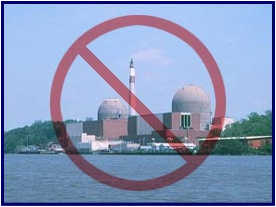
Notable Quotes
"The Nuclear Regulatory Commission has ranked Indian Point ‘in terms of potential human consequences as the No. 1 site in the nation."
-- Robert Stephan, Homeland Security's Assistant Secretary for Infrastructure Protection reported in the Journal News, March 23, 2006
Indian Point is "one of the most inappropriate sites in existence" for a nuclear plant.
--Robert Ryan, Nuclear Regulatory Commission staff member in 1979
Back to Indian Point:
Currently, each pool holds about 1,000 tons of radioactive waste. An additional 1,500 tons are stored in 15 dry casks on an open tarmac surrounded by barbed wire and a surveillance tower.
Remember that number: 100 tons per dry cask.
Across the country, 50,000 metric tons of waste was produced through the end of 2003, according to a 2005 report by the National Research Council. The nonprofit Union of Concerned Scientists predicts that by 2015 there will be over 75,000 metric tons of radioactive waste stored at temporary sites.
Indian Point will close in 2035, if it gets relicensed. Under the new waste storage rule, [color=Cyan]spent fuel would be stored there until 2095, and could remain on-site well into the 22nd century if the rule extends to 120 years.
And yet, the beat goes on...
22 December 2011
Nuke regulators bless reactor design amid Capitol Hill cheers, jeers
The Nuclear Regulatory Commission on Thursday approved the amended design for the Westinghouse AP1000, a reactor that several power companies intend to use for building the first new US nuclear plants in decades.
More Nukespeak, blah, blah, blah...
“The design provides enhanced safety margins through use of simplified, inherent, passive, or other innovative safety and security functions, and also has been assessed to ensure it could withstand damage from an aircraft impact without significant release of radioactive materials,” NRC Chairman Gregory Jaczko said in a statement.
... “significant release of radioactive materials.”
Is there a number attached to significant?
Is that like being a little bit pregnant?
What does that number equate to in "collateral damage" - human lives?
To be continued...
edit on 27/12/2011 by thorfourwinds because: color

(continued from previous post)
Utility giant Southern Co. is using the AP1000 for its project to build two new reactors at its Vogtle site in Georgia.
"This is another key milestone for the Vogtle project and the nation's nuclear renaissance,” said Southern Co. CEO Thomas A. Fanning. The Southern Co. project that has won a [color=Cyan]conditional $8.3 billion Energy Department loan guarantee but still awaits a final NRC license...
One might offer that if insurance and satisfactory waste disposal matters were a prerequisite to licensing, there would not be any more nuclear power plants built in America.
And on the day before the world changed:

10 March 2011
Double attack on US nuclear waste fees
(...) Funding for Yucca Mountain has come from a levy of 0.1 cents per kWh of nuclear power, which currently adds up to about $770 million per year. Nuclear utilities - and therefore their customers - have now paid a total of over $31 billion into the Nuclear Waste Fund.
The government was supposed to use this money to create a permanent nuclear waste disposal site by 1998.
Around $7 billion was spent and much progress made, but Yucca was cut off from funding in May 2009 by President Barack Obama and energy secretary Stephen Chu.
But, that was then and this is now.
Where, oh where is the waste going now? Is any of it being trucked around the country to a location different from the nuclear facility where the waste was generated? Ya think?
Having submitted an 8600-page application to build Yucca Mountain under President George Bush and his energy secretary Sam Bodman, the DOE under direction from Chu and Obama moved to withdraw it in May. Spending on Yucca is now set at the absolute minimum level, while the [color=Cyan]$24 billion balance of the fund remains with the US Treasury earning substantial compound interest of over $1 billion per year.
Let's see...that's a couple billion more...so there should be about $26 billion available.
How does one actually verify that this is a correct and true amount and where is the entry on the ledger?
Is it really there?
If not, would not that be something to investigate, identify the perpetrators and persecute, errrrr, prosecute, to the fullest extent of the law?
Here is where Obama made sure the process is still in process with no real movement regarding the safe disposal of radioactive waste.
Why are the power companies allowed to utilize this "to cheap to meter" power source?
This, however, was rejected by the Nuclear Regulatory Commission's independent Atomic Safety and Licensing Board (ASLB). The DoE had no right to substitute its own ideas in place of those legislated by Congress, said the ASLB, and is bound by law to complete its work at Yucca Mountain unless Congress acts to supercede the previous legislation.
"Completing the work" at Yucca Mountain means exactly what?
Does that imply that the money is conveniently tied up by legalize and not available to whatever entity is charged with the work?
In the meantime, Obama has created a 'Blue Ribbon' commission on radioactive waste management. It is hearing evidence from a range of stakeholders on waste management methods including reprocessing, recycling and the use of burner reactors as well as the widely accepted geologic disposal method as proposed for Yucca Mountain.
What the hell have they been doing for the past 50 years if not investigating the above?
And this bit of DoubleSpeak from Energy Secretary Steven “Nukee” Chu yesterday:
Chu calls reactor design approval ‘important milestone’
Energy Secretary Steven Chu is happy that the Nuclear Regulatory Commission has approved Westinghouse’s AP1000 nuclear reactor design, which is slated for use at an Energy Department-backed nuclear power plant in Georgia.
Chu’s praise for the design approval underscores [color=Cyan]Obama administration support for new nuclear power plants, a position at odds with some environmental groups.
[color=Chartreuse]‘The Administration and the Energy Department are committed to restarting America’s nuclear industry...” Chu said in a statement Thursday.
The game is on.
What say you?

Peace Love Light
tfw
[align=center][color=magenta]Liberty & Equality or Revolution[/align]

RADIATION WATCH 2011

[color=Cyan]The total number of days between Friday, March 11, 2011 and Saturday, December 31, 2011 is 295 days.
[color=FDD017]The radiation poisoning of we, the people, our children, pets, food, water and our land
has continued unabated - 24/7/365
[color=Chartreuse]
- for 8 months, 29 days ... which is:
• 25,488,000 seconds
• 424,800 minutes
• 7,080 hours
• 42 weeks (rounded down)
One again, are we any closer to a solution to the Fukushima multiple melt-throughs disaster/fiasco spewing life-altering clouds of radiation 24/7/365


Peace Love Light
tfw
[align=center][color=magenta]Liberty & Equality or Revolution[/align]
It's obvious to me that the OP has absolutely no clue about nuclear power or even energy in general, and instead likes to link dozens of external
sources without having the slightest clue about what they mean.
reply to post by thorfourwinds
They didn't abandon the construction since the reactor complex was not actually under construction, they abandoned the plan for new reactors. Given the US economy is doing poorly right now thus electricity growth has slowed, the proposed cost of the reactors inflated over time, the cost of licensing is significant, and some of the financing was coming from Japan, abandoning this project should be of no surprise. Also the reactors are operated by STPNOC, not NRG Energy. NRG has the largest share in the project.
reply to post by SirMike
It is not the end of big nuclear. The success of Small Modular Reactors depends on a lot of factors that are not certain at this moment in time. It will probably be around 2020 before it can actually be certain how successful they will be, because then several designs should be licensed, natural gas will be somewhat more expensive, and the NRC rules regarding SMRs will have changed.
During the 2020 timeframe about 6 'new' large reactors will likely come online.
Vogtle #3&4.
VC Summer #2&3.
Bellefonte #1.
Watts Bar #2.
The later two are not 'new' but construction will be restarted after being ceased in the 80's.
reply to post by thorfourwinds
Level IV is as far as I know the lowest safety violation. By comparison a Level III safety violation (more severe than level IV) was when a supervisor at a nuclear plant browsed the internet when there was nothing to do on the job. Oh the humanity!
It means exactly what it says. Areva doesn't want to give out public notification in advance of shipments of nuclear material, possibly because they don't want intervenors to uhm... intervene.
reply to post by zorgon
Italy had no reactors under construction so they didn't freeze anything. They froze the plans to build new reactors. It seems fickle to me that they would freeze plans for new nuclear plants because of Fukushima and it seems fickle to me that they closed nuclear plants after Chernobyl. It just tells me they were not aware of the risks and benefits in the first place and change their minds on a whim. Go nuclear, abandon nuclear, start planning for new nuclear, abandon nuclear. Better abandon any nuclear plans before reactors are built rather than build them and then have the government change their mind again. That would be an enourmous waste of money.
Germany used to get something like 25% of it's electricity from nuclear. That's not exactly a 'reliance'. But in any case, unlike the article suggests, they will be phased out mainly with new coal generation.
reply to post by thorfourwinds
US power company abandons reactor construction
They didn't abandon the construction since the reactor complex was not actually under construction, they abandoned the plan for new reactors. Given the US economy is doing poorly right now thus electricity growth has slowed, the proposed cost of the reactors inflated over time, the cost of licensing is significant, and some of the financing was coming from Japan, abandoning this project should be of no surprise. Also the reactors are operated by STPNOC, not NRG Energy. NRG has the largest share in the project.
reply to post by SirMike
It’s the end of big nuclear but small modular reactors are going to hit the market in just a few years and they are going to be huge .. no pun intended.
It is not the end of big nuclear. The success of Small Modular Reactors depends on a lot of factors that are not certain at this moment in time. It will probably be around 2020 before it can actually be certain how successful they will be, because then several designs should be licensed, natural gas will be somewhat more expensive, and the NRC rules regarding SMRs will have changed.
During the 2020 timeframe about 6 'new' large reactors will likely come online.
Vogtle #3&4.
VC Summer #2&3.
Bellefonte #1.
Watts Bar #2.
The later two are not 'new' but construction will be restarted after being ceased in the 80's.
reply to post by thorfourwinds
During a U.S. Nuclear Regulatory Commission (NRC) inspection from February 7-11, 2011, a Severity Level IV violation was identified: the licensee failed to implement items relied on for safety for the ammonia recovery facility stripper column to prevent an inadvertent nuclear criticality, which is a credible high consequence event.
Level IV is as far as I know the lowest safety violation. By comparison a Level III safety violation (more severe than level IV) was when a supervisor at a nuclear plant browsed the internet when there was nothing to do on the job. Oh the humanity!
OK. Do I read this right? Areva requested the NRC the right to withhold advance notification of export (read: nuclear) shipments from the public.
So, the NRC denied the request in favor of a policy that informs the public 30 days after the nuclear material has been delivered... what does this really mean? Newspeak?
It means exactly what it says. Areva doesn't want to give out public notification in advance of shipments of nuclear material, possibly because they don't want intervenors to uhm... intervene.
reply to post by zorgon
Italy freezes nuclear plant construction
Italy had no reactors under construction so they didn't freeze anything. They froze the plans to build new reactors. It seems fickle to me that they would freeze plans for new nuclear plants because of Fukushima and it seems fickle to me that they closed nuclear plants after Chernobyl. It just tells me they were not aware of the risks and benefits in the first place and change their minds on a whim. Go nuclear, abandon nuclear, start planning for new nuclear, abandon nuclear. Better abandon any nuclear plans before reactors are built rather than build them and then have the government change their mind again. That would be an enourmous waste of money.
Germany to end reliance on nuclear power
Germany used to get something like 25% of it's electricity from nuclear. That's not exactly a 'reliance'. But in any case, unlike the article suggests, they will be phased out mainly with new coal generation.
edit on 16/1/12 by C0bzz because: (no reason given)
reply to post by thorfourwinds
It was signed into law that the USG has the responsibility to take care of the waste. The nuclear industry pays for it. Until the USG takes care of the waste, then the nuclear industry will continue to do what it's doing. Filling spent fuel pools and once full, putting the older waste into dry casks. Doing so is rather cheap, actually.
Only two of the six reactors that are likely to be opened in the USA before or around 2020, are conditional on loan guarantees. Loan guarantee means the government will pay the debt if the company building the reactor is unable to pay back the debt for any reason. If everything goes to plan the USG doesn't spend a cent (and actually gets paid money). Actually, part of the reason why some nuclear projects are dependent on loan guarantees, is because the USG is partially responsible for delaying and obstructing nuclear plants from about 1974 onwards. Nuclear plants built before 1974 tended to take about 4 years to build, after 1974 they typically took over 10 years to built if they were even finished.
Perhaps it wouldn't be so expensive if the NRC wasn't paid >$200 per man-hour to review thousands of pages of design documents for proposed designs.
reply to post by thorfourwinds
On peculiar fact about radiation is that it can be detected at extraordinarily low levels.Do you have any idea how low levels of "0.01-0.1 picocuries (one-trillionth of a curie) per cubic meter in air" are? The risk is likely infinity small which is why the NY state department said there is no threat to public health.
reply to post by thorfourwinds
Uranium is about as toxic as many other heavy metals. You don't particular want to eat it or breathe it in, but a spill of a few tons of it is not a huge deal as long as it is proper cleaned up. But since none escaped, that wasn't even necessary.
Is this supposed to somehow scare us because a container carrying something about as toxic as lead fell off a truck with no release? If it does scare you, then you scare easily or are unaware of the actual (lack of) danger posed by uranium oxide.
Uranium has been dug from the ground, therefore it can be placed back in the ground. It has been enriched of course, but that can be counteracted by simply diluting it.
There is no low level waste problem, you just invented it.
OH NO.
A box containing 9.75 grams of a metal about as toxic as lead, caught fire as it was being put into an incinerator! It's the end of the world!
How can we continue to fund an industry that has supposedly been snookered by the withholding of funding for Yucca Mountain - the only proposed waste repository in America?
It was signed into law that the USG has the responsibility to take care of the waste. The nuclear industry pays for it. Until the USG takes care of the waste, then the nuclear industry will continue to do what it's doing. Filling spent fuel pools and once full, putting the older waste into dry casks. Doing so is rather cheap, actually.
If the funding isn't there, there will be no further nuclear development.
Only two of the six reactors that are likely to be opened in the USA before or around 2020, are conditional on loan guarantees. Loan guarantee means the government will pay the debt if the company building the reactor is unable to pay back the debt for any reason. If everything goes to plan the USG doesn't spend a cent (and actually gets paid money). Actually, part of the reason why some nuclear projects are dependent on loan guarantees, is because the USG is partially responsible for delaying and obstructing nuclear plants from about 1974 onwards. Nuclear plants built before 1974 tended to take about 4 years to build, after 1974 they typically took over 10 years to built if they were even finished.
The reactors would be owned by a utility, and would require $500 million over five years, about 50 percent of the estimated cost to complete two designs and secure approval from the Nuclear Regulatory Commission, the New York Times reports.
Perhaps it wouldn't be so expensive if the NRC wasn't paid >$200 per man-hour to review thousands of pages of design documents for proposed designs.
reply to post by thorfourwinds
Radioactive Material Detected in Air, Water in New York
On peculiar fact about radiation is that it can be detected at extraordinarily low levels.Do you have any idea how low levels of "0.01-0.1 picocuries (one-trillionth of a curie) per cubic meter in air" are? The risk is likely infinity small which is why the NY state department said there is no threat to public health.
reply to post by thorfourwinds
A cargo container filled with about 4.5 short tons of uranium oxide powder fell off a truck leaving Richland's Framatome ANP nuclear fuel plant on Sep. 26, 2005, but company and state officials said there was no sign the toxic material inside had escaped.
Uranium is about as toxic as many other heavy metals. You don't particular want to eat it or breathe it in, but a spill of a few tons of it is not a huge deal as long as it is proper cleaned up. But since none escaped, that wasn't even necessary.
Is this supposed to somehow scare us because a container carrying something about as toxic as lead fell off a truck with no release? If it does scare you, then you scare easily or are unaware of the actual (lack of) danger posed by uranium oxide.
On October 16, 2003, the U.S. NRC issued import license IW009, authorizing Framatome ANP Inc. to import 1200 kilograms uranium contained in Class A Radioactive Waste consisting of combustible materials (paper, wood, clothing, plastic) contaminated with low enriched uranium (LEU) oxide powder, enriched to 5% w/o maximum, generated during the LEU fuel fabrication process.
Uranium has been dug from the ground, therefore it can be placed back in the ground. It has been enriched of course, but that can be counteracted by simply diluting it.
So, now we are accepting waste from other countries for disposal in the U.S.? As if we had the waste problem solved for our own waste?
There is no low level waste problem, you just invented it.
"On February 20, 2003, at approximately 0630 hrs., a small fire occurred in the feed hopper of the solid waste uranium recovery incinerator involving a cardboard waste box, containing about 9.75 grams of U-235, which caught fire before it was fully fed into a waste incinerator. (...)
OH NO.
A box containing 9.75 grams of a metal about as toxic as lead, caught fire as it was being put into an incinerator! It's the end of the world!
According to the licensee, a criticality in the affected drum could theoretically be possible only had the moisture content been over ten times the process limit, or over fifty times the actual moisture content of the affected drum. (...)"
A car crash it also possible if you drive at ten times the speed limit. You know, like 700mph in a 70mph zone. That's why you don't.
The nuclear industry relies on defense in depth:
In nuclear engineering and nuclear safety, defence in depth denotes the practice of having multiple, redundant, and independent layers of safety systems
en.wikipedia.org...
The mere fact that one safety layer failed is never a good thing, however it was hardly a 'close call'.
Honestly folks, we wish that this stuff was made up for giggles and not true, but, that's not the case.
OH NOES.
You mean the evil NUCLEAR INDUSTRY is selling a byproduct that can be used a a fertilizer that contains LESS URANIUM THAN SOIL? How evil of them. It's the end of the world. This will kill you and your kids [/sarcasm].
You're making yourself look incredibly stupid, but that's not anything new with anti-nukes.
reply to post by thorfourwinds
Perhaps instead of meaningless ranting, you might back up your statement with evidence or other factual information on the three distinct things you speak of: "wireless electricity", "no fuel" and "no cost'?
And perhaps instead of meaningless quoting random sources without proving that anything is dangerous to the health of the public, you could actually back up your ideas with actual evidence and factual information other than:
"The nuclear industry is selling fertilizer that is less radioactive than soil, they originally didn't get permission to do so, therefore the nuclear industry is evil and this is a huge issue that will impact the health of the public". Or whatever you were attempting to get at.
Practice what you preach.
reply to post by thorfourwinds
Your source says "at worst, would have extremely minor health consequences ".
And here we were under the impression that radiation detectors detect radiation - not temperature.
I don't even know how to respond to this. It's so stupid it beggars belief. You should be ashamed of yourself because the continual posting of such garbage is lowing the collective IQ of this website.
For example, higher temperatures can cause higher levels of naturally occurring radon gas, he said.
Is this really that hard to understand?
Oh, that's reassuring - only about 20% of our monitors down in a nuclear emergency!
How is it an emergency when: "at worst, (it) would have extremely minor health consequences ".
Radioactive Iodine-131 in Pennsylvania rainwater sample is 3300% above federal drinking water standard
… The (Iodine-131) numbers reported in the rainwater samples in Pennsylvania range from 40-100 picocuries per liter (pCi/L). Although these are levels above the background levels historically reported in these areas, they are still about 25 times below the level that would be of concern. The federal drinking water standard for Iodine-131 is three pCi/L. …
3 pCi/L is an extremely small amount. Actually by getting the biological half life of Iodine, combining it with the physical half life of Iodine-131 it would be possible to figure out the amount of dose, and thus cancer risk, that someone would get from Iodine-131. Or you could ask the source of the information why it's 25 times below the levels of concern. In any case, this source is self debunking. If the federal drinking water standard is that much below levels of concern, then maybe the federal drinking water standard is arbitrary and too low.
Newspeak... DoubleSpeak... Gobbledegook... Your choice.
How is it news speak, doublespeak or whateveryou call it? It's perfectly fine reporting. Just because you do not agree with it or you don't understand it doesn't mean it's wrong. You have not shown any of that.
reply to post by thorfourwinds
Nuclear reactor 150 miles from Atlanta shuts down abruptly and unexpectedly
— Triggered if system detects conditions that could be unsafe
Uhm, so what? Reactors can shut down for a lot of reasons. In this particular case it was because an electrical turbine had a fault - which has absolutely nothing to do with the safety of the public. You keep posting irrelevant news that's self debunking.
Japan Nuclear Iodine Radiation In San Francisco Milk Over 2600% Above EPA Drinking Water Limit
So? Does that show it's dangerous? As I said, it is not difficult to compute the radiation dose from such an amount of radiatioactive decay in milk, if you had bothered to do so you would see the risk increase is extremely small.
edit on 16/1/12 by C0bzz because: (no reason given)
edit on 16/1/12 by C0bzz because: (no reason given)
I'll focus on page two later.
edit on 16/1/12 by C0bzz because: (no reason given)
reply to post by thorfourwinds
A bunch of articles with some rhetorical questions and comments attached by you with little context is not fact. Especially when the reader does not know what it means.
Chris Busby is an idiot con-artist using Fukushima to sell products. He should be ashamed of himself and you should be ashamed of yourself for repeating his ridiculous claims here.
The most accepted model of cancer risk with respect to radiation is the linear no threshold (LNT) model, which is the theory that any dose of radiation will increase cancer risk in proportion to the dose (i.e. 2 units will have twice the risk of 1 unit of exposure). Therefore, at high doses of radiation the risk of cancer will be significantly increased. At extremely small doses of radiation the increase in cancer risk will be extremely small and could be regarded as insignificant.
If you want to learn more you can read the ICRP or BEIR reports.
We are truly amazed that presenting what is a pure fact - without any spin associated to it - can generate such an outbreak of insecurity and outright fear-driven responses.
A bunch of articles with some rhetorical questions and comments attached by you with little context is not fact. Especially when the reader does not know what it means.
Government Radiation Expert Deconstructs Myth Of “Safe” Radiation Levels
Nuclear radiation expert and renowned Government radiation expert, Chris Bubsy, deconstructs the myths and propaganda of so-called “safe” levels of nuclear radiation.
Chris Busby is an idiot con-artist using Fukushima to sell products. He should be ashamed of himself and you should be ashamed of yourself for repeating his ridiculous claims here.
One of Busby’s best-known contentions, widely repeated by anti-nuclear campaigners, is that there is a leukaemia cluster among children living close to the coast of north Wales.
His findings were self-published and released by the consultancy he runs, called Green Audit. This means that they were not subjected to the scientific assessment required by peer-reviewed journals. Data and claims have to withstand the peer review process if they’re to be treated by other scientists as worthy of further investigation.
Busby’s claims were later assessed by professional scientists working for the Welsh Cancer Intelligence and Surveillance Unit at the NHS, whose role is to record and analyse the incidence of cancer and monitor any trends in its occurrence.
They published their assessment in a peer-reviewed scientific journal, the Journal of Radiological Protection. Their paper reported a simple and devastating finding: there is no such cluster. Busby’s claims, it says, were the result of some astonishing statistical mistakes.
As for his “second event theory”, which maintains that radionuclides are far more dangerous than scientists say they are, the paper asserts that there is no evidence supporting this, and it has “no biological plausibility”.
www.monbiot.com...
A fortnight ago, the Guardian examined the work of a Dr Chris Busby(3,4). We found that he has been promoting anti-radiation pills and tests to the people of Japan, which scientists have described as useless and baseless. We also revealed that people were being asked to send donations, ostensibly to help the children of Fukushima, to Busby’s business account in Aberystwyth. We found that scientists at the NHS had examined his claims to have detected a leukaemia cluster in north Wales and discovered that they arose from a series of shocking statistical mistakes. Worse still, the scientists say, “the dataset has been systematically trawled”: they’re accusing him of picking the data that suits his case(5). Yet Busby, until our report was published, advised the Green party on radiation. His “findings” are widely used by anti-nuclear activists.
www.monbiot.com...
Government Radiation Expert Deconstructs Myth Of “Safe” Radiation Levels
The most accepted model of cancer risk with respect to radiation is the linear no threshold (LNT) model, which is the theory that any dose of radiation will increase cancer risk in proportion to the dose (i.e. 2 units will have twice the risk of 1 unit of exposure). Therefore, at high doses of radiation the risk of cancer will be significantly increased. At extremely small doses of radiation the increase in cancer risk will be extremely small and could be regarded as insignificant.
If you want to learn more you can read the ICRP or BEIR reports.
reply to post by muzzleflash

Greetings my friend:
We need to keep the horror of this environmental warfare nuclear holocaust on the front page of we, the people's, minds and thoughts in a positive, pro-active way, so as to be a beacon of light in the dark night of a potential nuclear winter, as [color=Cyan]positive thoughts create positive reality.

We certainly do not need any more distractions to further pollute our understanding of manifesting reality. We lightworkers have much to do, and as usual, you are on the front line with your incisive observations.
We salute you and wish you complete safety Godspeed.
On our side of the hill, we have been keeping the Bat Signal lit since 3/11- [color=Chartreuse]Nukushima Day 1, contending that what prevails here in America is a well-organized camouflage, a criminal act, actually, orchestrated by the very same people to whom we entrusted the power to uphold the law, and - by extension, our values - and who are paid to protect US: we, the people.
That’s their damn, strike that, sworn duty!!
Ethics, integrity, responsibility, anyone?
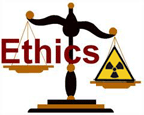
The public health radiation-induced quandry in the United States evidenced by infant mortality rates skyrocketing, the contamination of all open water, agricultural land and the entire food chain, not to mention the broader economic and social implications, has neither been fully acknowledged nor addressed in a comprehensive and meaningful fashion by the very authorities we elected and pay mightily for... for what, pray tell?
This is an undeclared nuclear war perpetrated on the peoples of Earth by an uncaring conspiracy comprised of the JAPGOV/TEPCO, the EPA/FDA/USGOV and the MSM worldwide. We have dealt with war before, and we'll treat this attack on we, the people, as such and respond accordingly, albeit with 40 years more knowledge and ammunition plus newly-freed pent-up frustrations of feeling betrayed by those we trust... we do not forget.
America as a nation state is on the Eve of Destruction, teetering on the brink of a precipice that is surely a fatal fall if we were to plunge into the abyss. Our once-fertile, abundant lands and inland, once-pristine waters are now nuclear fallout contaminated - for how long, no one seems to be sure - hundreds, perhaps thousands of years. The balloon has dropped people, and it's called Nukushima.
Too many parts of our country are already uninhabitable forever, plagued by the broken promises of multiple lackey government agencies and nuclear-friendly-and-paid-for administrations that continued to kick the nuclear radioactive waste can down to road and these once-temporary on-site spent fuel pools and dry canister storage have now become the final resting place for this nightmare abomination that is radioactive - for all intents and purposes - FOREVER.
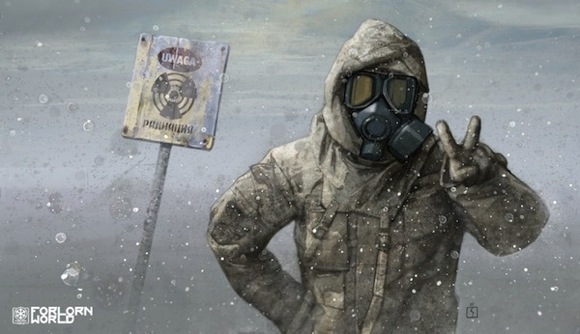
In this light, we are pleased to share a few non-radioactive nuggets to your fine effort.
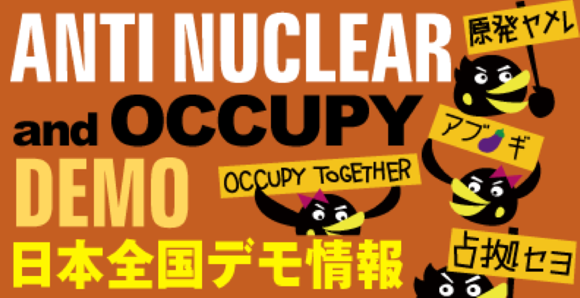
These are some "fishing" Tweets:
Occupy+Anti-Nuclear Collective = Force to be reckoned with. TEPCO/JAPGOV blink
as radiation cover-up further exposed. DENY IGNORANCE
www.abovetopsecret.com...
RADIATION WATCH 2012+RadWaste in Kyrgyzstan+StarryBrooke intense Yokohama
anti-nuclear rally pics, Passion Personified...DENY IGNORANCE
www.abovetopsecret.com...
DENY IGNORANCE
Radiation Watch 2011:Cold shutdown NUKESPEAK, Yucca Mtn Boondoggle-Now What?
www.abovetopsecret.com...
Mutant' life' is not quality living in our book: What say you? DENY IGNORANCE
www.abovetopsecret.com...
All breadcrumbs dropped along the trail lead back to ATS... so, lead, follow,
or get out of the way!
[color=Cyan]Continue to give 'em hell, Muz... we've got your back.
www.abovetopsecret.com...
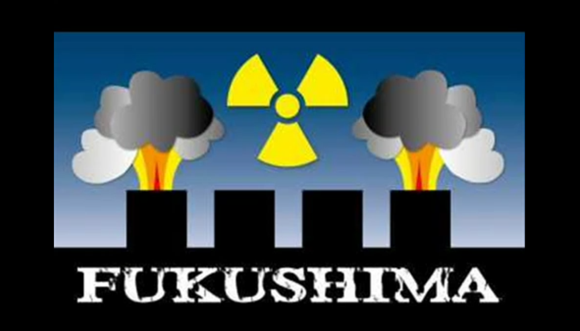
www.abovetopsecret.com...
www.abovetopsecret.com...
click stargate

Peace Love Light
tfw
[align=center][color=magenta]Liberty & Equality or Revolution[/align]

www.abovetopsecret.com...

Greetings my friend:
We need to keep the horror of this environmental warfare nuclear holocaust on the front page of we, the people's, minds and thoughts in a positive, pro-active way, so as to be a beacon of light in the dark night of a potential nuclear winter, as [color=Cyan]positive thoughts create positive reality.

We certainly do not need any more distractions to further pollute our understanding of manifesting reality. We lightworkers have much to do, and as usual, you are on the front line with your incisive observations.
We salute you and wish you complete safety Godspeed.
On our side of the hill, we have been keeping the Bat Signal lit since 3/11- [color=Chartreuse]Nukushima Day 1, contending that what prevails here in America is a well-organized camouflage, a criminal act, actually, orchestrated by the very same people to whom we entrusted the power to uphold the law, and - by extension, our values - and who are paid to protect US: we, the people.
That’s their damn, strike that, sworn duty!!
Ethics, integrity, responsibility, anyone?

The public health radiation-induced quandry in the United States evidenced by infant mortality rates skyrocketing, the contamination of all open water, agricultural land and the entire food chain, not to mention the broader economic and social implications, has neither been fully acknowledged nor addressed in a comprehensive and meaningful fashion by the very authorities we elected and pay mightily for... for what, pray tell?
This is an undeclared nuclear war perpetrated on the peoples of Earth by an uncaring conspiracy comprised of the JAPGOV/TEPCO, the EPA/FDA/USGOV and the MSM worldwide. We have dealt with war before, and we'll treat this attack on we, the people, as such and respond accordingly, albeit with 40 years more knowledge and ammunition plus newly-freed pent-up frustrations of feeling betrayed by those we trust... we do not forget.
America as a nation state is on the Eve of Destruction, teetering on the brink of a precipice that is surely a fatal fall if we were to plunge into the abyss. Our once-fertile, abundant lands and inland, once-pristine waters are now nuclear fallout contaminated - for how long, no one seems to be sure - hundreds, perhaps thousands of years. The balloon has dropped people, and it's called Nukushima.
Too many parts of our country are already uninhabitable forever, plagued by the broken promises of multiple lackey government agencies and nuclear-friendly-and-paid-for administrations that continued to kick the nuclear radioactive waste can down to road and these once-temporary on-site spent fuel pools and dry canister storage have now become the final resting place for this nightmare abomination that is radioactive - for all intents and purposes - FOREVER.

In this light, we are pleased to share a few non-radioactive nuggets to your fine effort.

These are some "fishing" Tweets:
Occupy+Anti-Nuclear Collective = Force to be reckoned with. TEPCO/JAPGOV blink
as radiation cover-up further exposed. DENY IGNORANCE
www.abovetopsecret.com...
RADIATION WATCH 2012+RadWaste in Kyrgyzstan+StarryBrooke intense Yokohama
anti-nuclear rally pics, Passion Personified...DENY IGNORANCE
www.abovetopsecret.com...
DENY IGNORANCE
Radiation Watch 2011:Cold shutdown NUKESPEAK, Yucca Mtn Boondoggle-Now What?
www.abovetopsecret.com...
Mutant' life' is not quality living in our book: What say you? DENY IGNORANCE
www.abovetopsecret.com...
All breadcrumbs dropped along the trail lead back to ATS... so, lead, follow,
or get out of the way!
[color=Cyan]Continue to give 'em hell, Muz... we've got your back.
www.abovetopsecret.com...

www.abovetopsecret.com...
www.abovetopsecret.com...
click stargate

Peace Love Light
tfw
[align=center][color=magenta]Liberty & Equality or Revolution[/align]

www.abovetopsecret.com...
new topics
-
Paradox of Progress
Ancient & Lost Civilizations: 2 hours ago -
Joe Biden gives the USA's Highest Civilian Honor Award to Hillary Clinton and George Soros.
US Political Madness: 5 hours ago -
Winter Storm
Fragile Earth: 5 hours ago -
Biden Face Planted Somewhere
Politicians & People: 7 hours ago -
A great artist and storyteller, for kids of all ages
General Entertainment: 8 hours ago -
What Is 'Quad Demic'? Mask Mandate Returns In These US States
Diseases and Pandemics: 11 hours ago
top topics
-
Joe Biden gives the USA's Highest Civilian Honor Award to Hillary Clinton and George Soros.
US Political Madness: 5 hours ago, 13 flags -
What Is 'Quad Demic'? Mask Mandate Returns In These US States
Diseases and Pandemics: 11 hours ago, 10 flags -
Volcano Watch 2025
Fragile Earth: 14 hours ago, 8 flags -
The Future of fashion .
Social Issues and Civil Unrest: 12 hours ago, 8 flags -
Winter Storm
Fragile Earth: 5 hours ago, 7 flags -
Bin Cyber Junk…
Short Stories: 13 hours ago, 6 flags -
Biden Face Planted Somewhere
Politicians & People: 7 hours ago, 5 flags -
A great artist and storyteller, for kids of all ages
General Entertainment: 8 hours ago, 5 flags -
Paradox of Progress
Ancient & Lost Civilizations: 2 hours ago, 4 flags -
The Undertones - Teenage Kicks
Music: 13 hours ago, 3 flags
active topics
-
A great artist and storyteller, for kids of all ages
General Entertainment • 1 • : angelchemuel -
What Is 'Quad Demic'? Mask Mandate Returns In These US States
Diseases and Pandemics • 28 • : nugget1 -
-@TH3WH17ERABB17- -Q- ---TIME TO SHOW THE WORLD--- -Part- --44--
Dissecting Disinformation • 3931 • : RelSciHistItSufi -
Joe Biden gives the USA's Highest Civilian Honor Award to Hillary Clinton and George Soros.
US Political Madness • 29 • : caterpillage -
Winter Storm
Fragile Earth • 17 • : WeMustCare -
NJ Drones tied to Tesla explosion at Trump Las vegas
General Conspiracies • 45 • : glen200376 -
Paradox of Progress
Ancient & Lost Civilizations • 2 • : ChaoticOrder -
New Jersey-Teachers Can Now Be Certified Without Passing Basic Reading Writing Math Testing
Education and Media • 14 • : boatguy12 -
Judge rules president-elect Donald Trump must be sentenced in 'hush money' trial
US Political Madness • 18 • : marg6043 -
Volcano Watch 2025
Fragile Earth • 6 • : rickymouse

